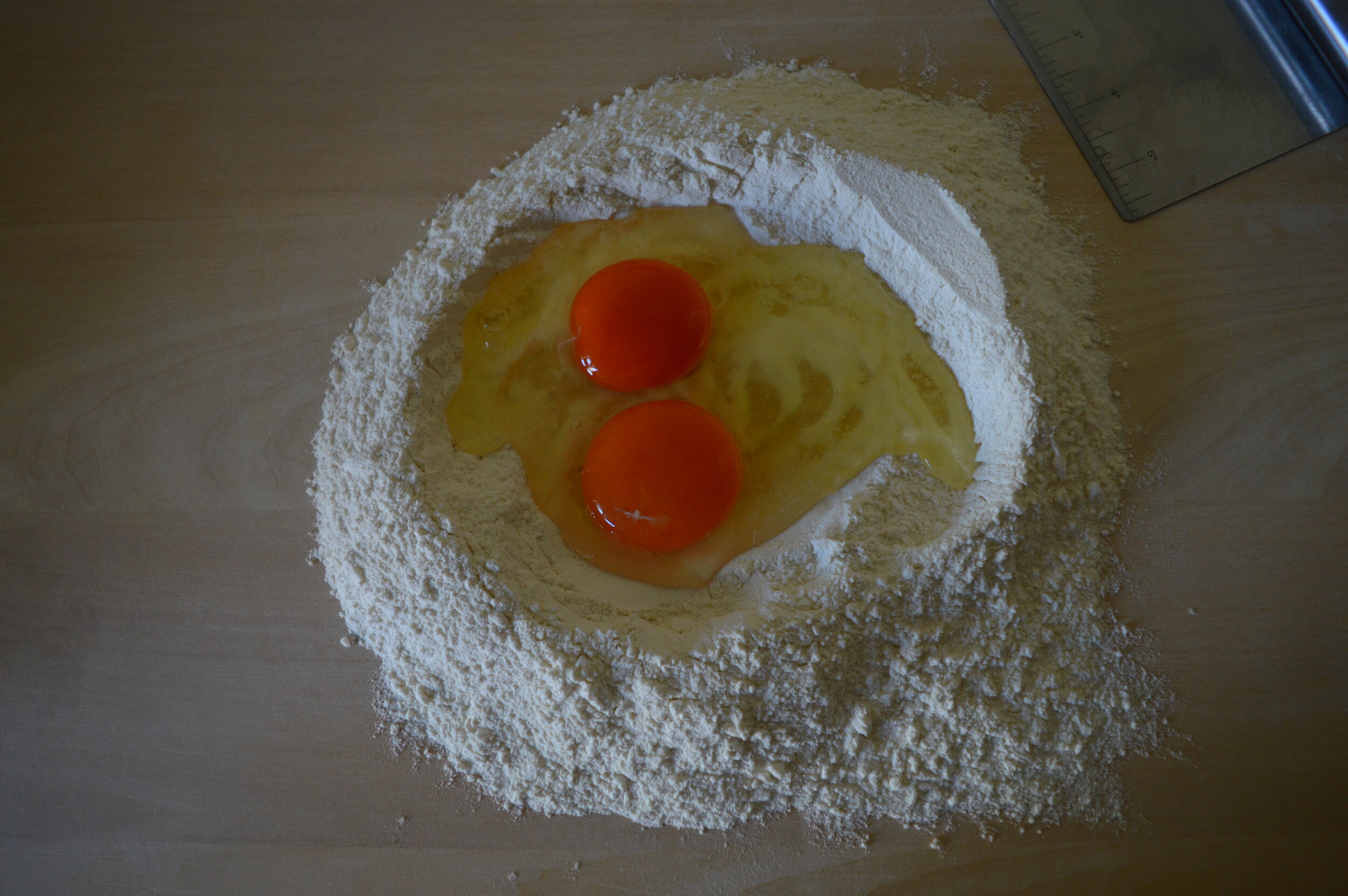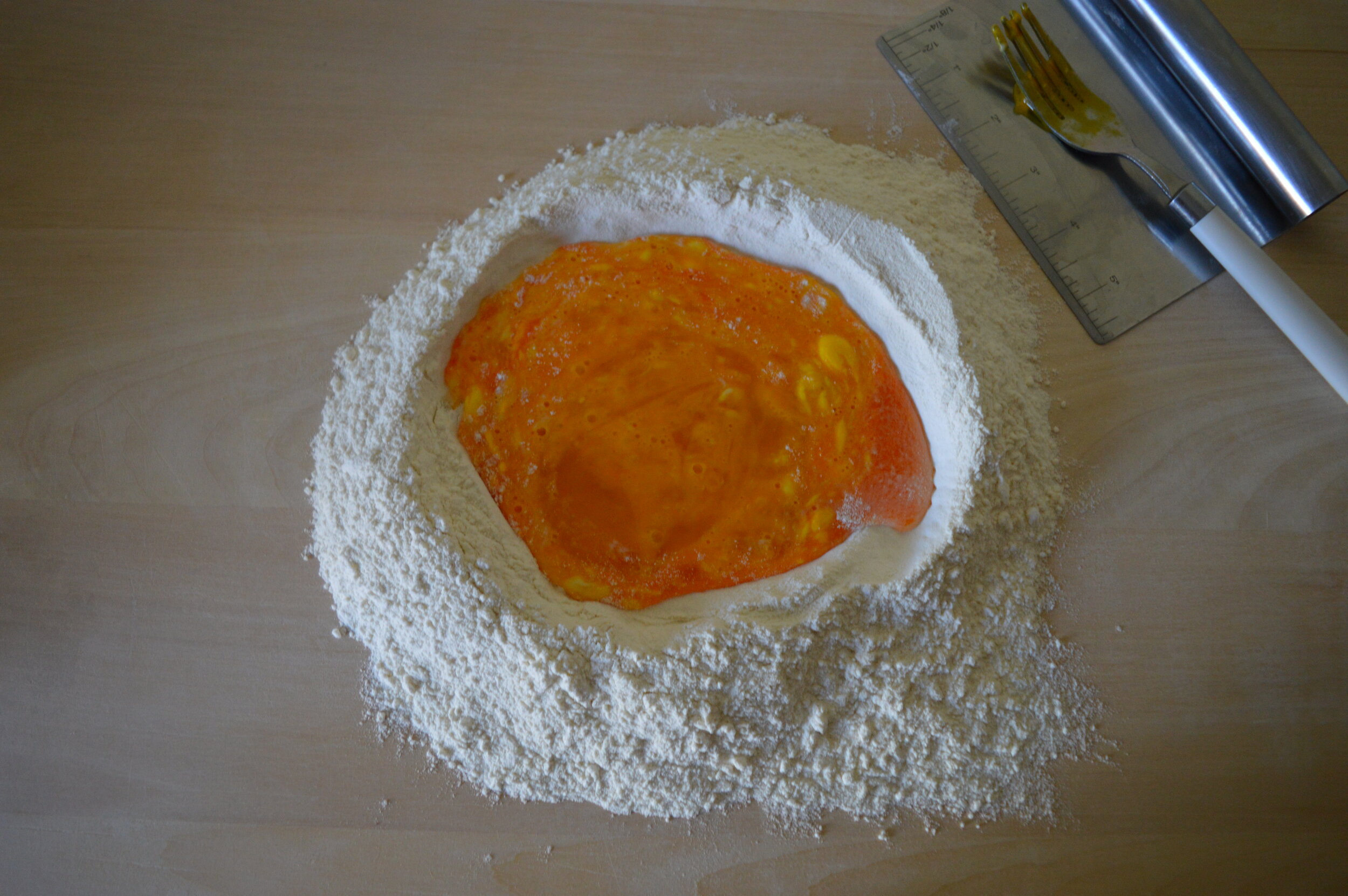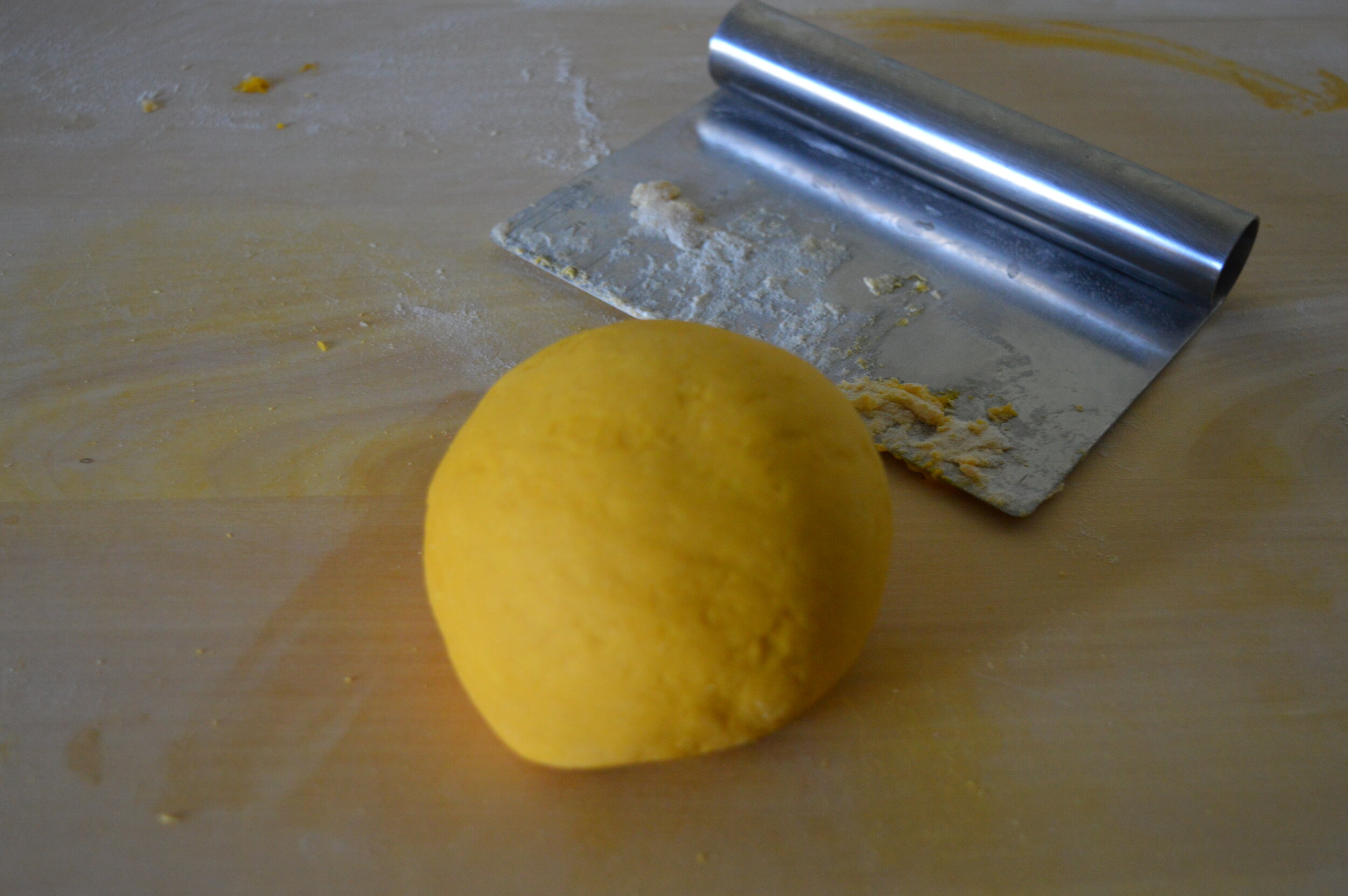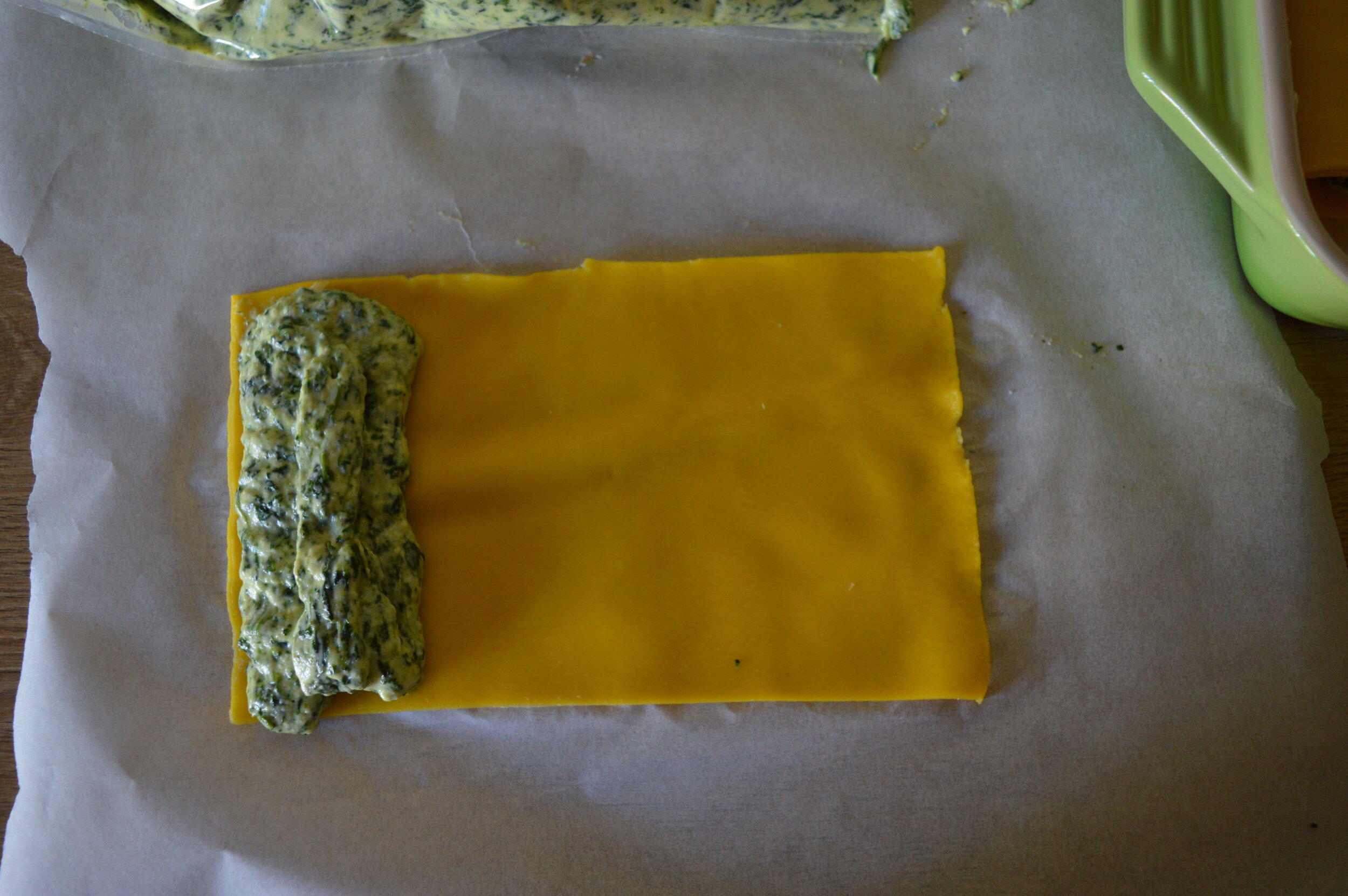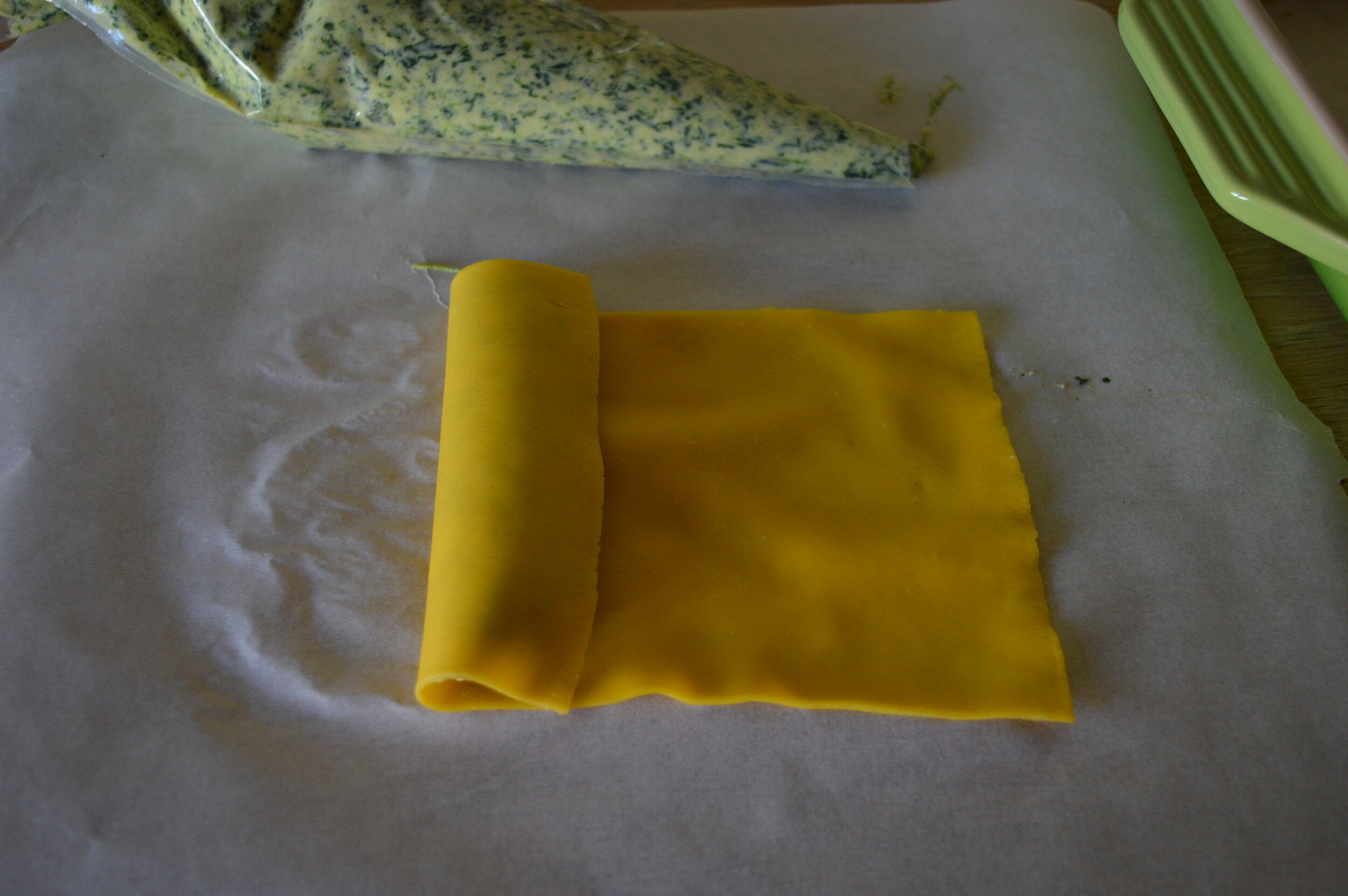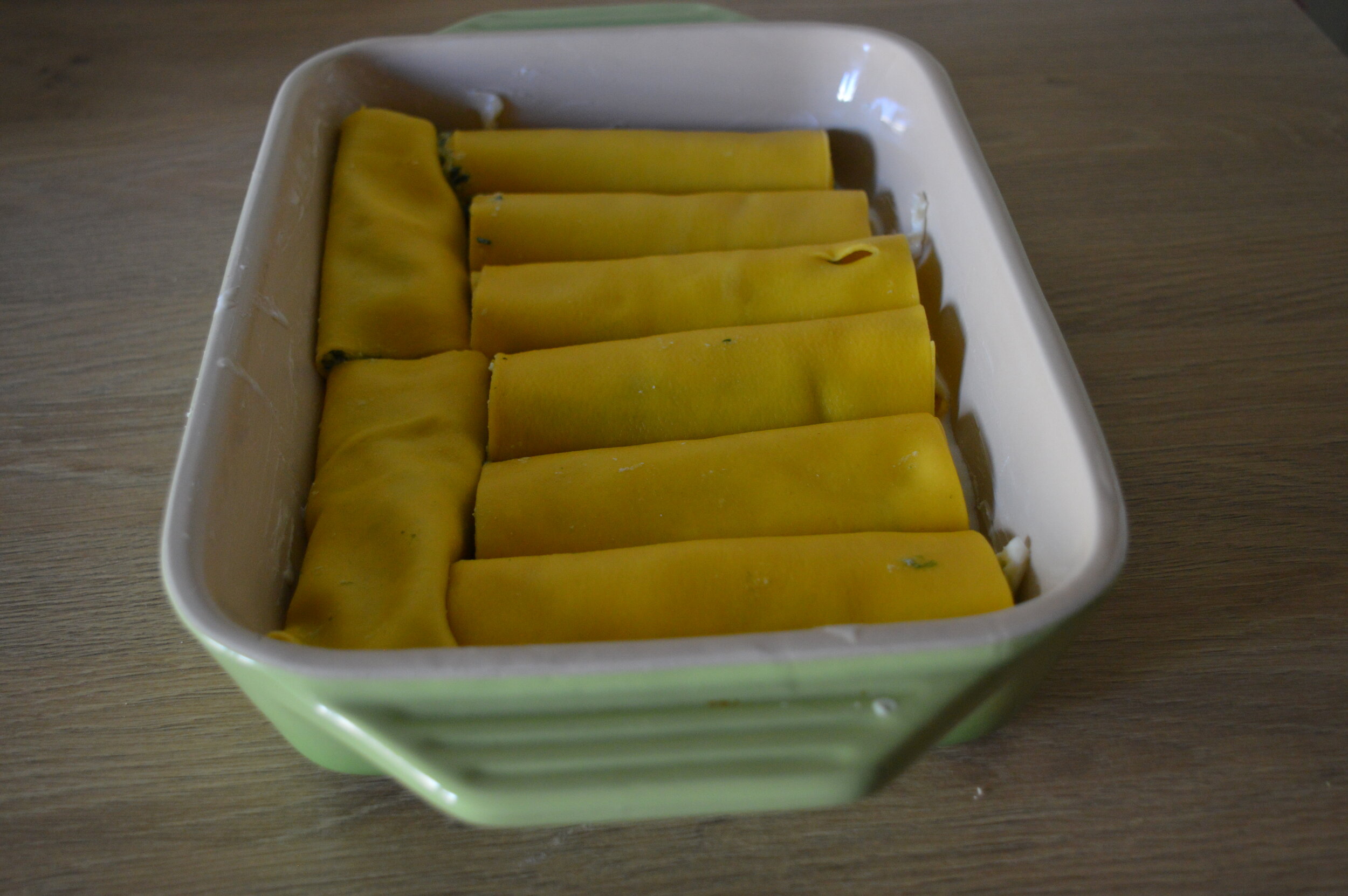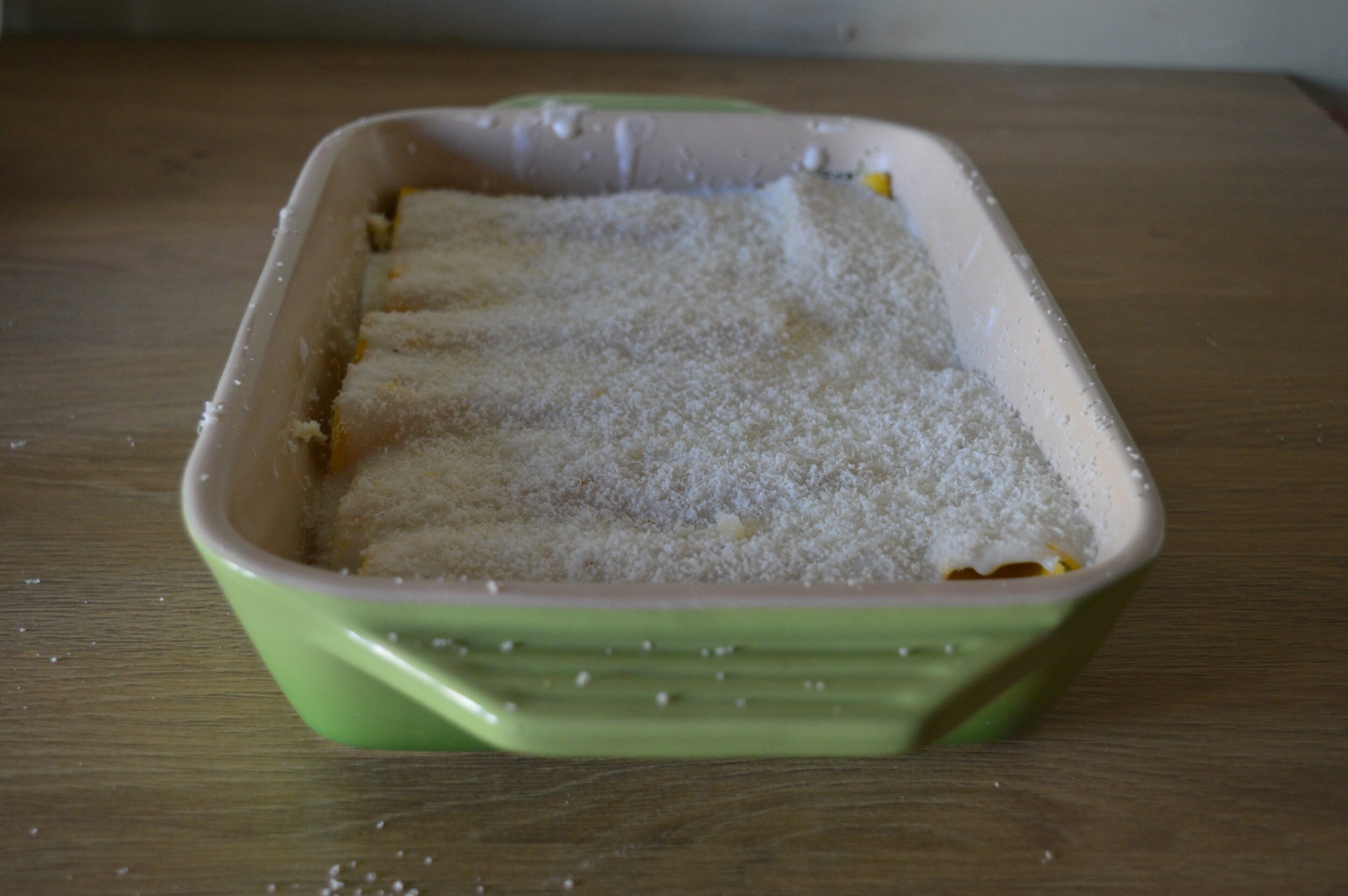Pasta Series #16: Cannelloni ricotta e spinaci
Eccomi! After a busy start to April I’m back with the latest round of the blog’s Pasta Series, i.e my (nearly) monthly post detailing the latest homemade pasta I’ve attempted and (hopefully) conquered.
Recap: we’ve already covered egg pasta in this Series, plus pasta shaken up with a different kind of flour, pasta made with semola, gnocchi in all of its various forms, and quick and easy spatzle. Post #16 in the series covers cannelloni, a variation on the building block that is egg pasta, and a sort of cross between ravioli (post #1 in the series) and lasagne ai carciofi (post #2 in the series), where pasta sheets are rolled out and boiled like they would be for a lasagne, but are stuffed like ravioli would be. With me so far?
Fun fact: cannelloni translates to tubes, or pipes in Italian, a name that very literally reflects their shape and is nearly as appetizing as penne (pens,) and cavatappi (corkscrews) but not quite as off-putting as orecchiette (little ears,) and linguine (little tongues). For other oddly named dishes in the Italian repertoire, see saltimbocca (jump-in-mouth veal), calzone (pantleg), and paglia e fieno (straw and hay).
So! There are two traditional preparations of cannelloni here in Italy; there is the richer, heartier variation of cannelloni made with a meat filling, and the slightly lighter ones that I’ve opted for today, with a spinach and ricotta filling. This is my formula for perfect cannelloni ricotta e spinaci — the result of extensive cannelloni researching, testing and tweaking, you’re welcome — that goes a little like this: fresh pasta — in all its delicate, silky, glory! — is filled with mild-mannered ricotta and mellow spinach, the perfect backdrop for the louder, stronger, flavors provided by a shower of Pecorino and Parmesan, respectively. A blanket of velvety, lemon-scented béchamel — baked to a vivacious bubble — makes your cannelloni-masterpiece extra luxurious, and a dash of Parmesan over the top before going in to the oven may seem like a minor detail, but makes all the difference, giving the cannelloni a gorgeous golden hue. Bonus: the lemon zest and ricotta make these particularly Spring-y and seasonal. Extra bonus: these are an excellent, substantial alternative for your vegetarian friends who often have to pass on cozy baked pastas like lasagne alla bolognese (a long overdue wrong made right).
Note for the wary: while there are a few steps involved in this recipe (pasta, filling, béchamel) none of them are difficult, and each one allows wiggle room for the others. While the pasta rests, get to work on your spinach filling; while the spinach is cooling, there is time to roll out the pasta; while the pasta sheets cook on the stove, so does your béchamel, and so on and so forth.
A couple of notes on the pasta: Using a kitchen scale is essential to making good pasta (fellow Americans, this is not the time for cups or tablespoons). To make good pasta, measure out the weight of your eggs, and multiply that weight by 2 to get the quantity of flour. For example, if your eggs weigh 130 grams, then you should use 260 grams of flour. Eggs differ in size, which is why it is difficult to give a standard flour measurement for two eggs. Note that you can make your pasta dough a day in advance and keep it in the fridge, well-wrapped in plastic wrap. Bring it back up to room temperature before using.
A couple of notes on the dish in general: Please note that in further test versions of this recipe, I used more béchamel in the recipe than what is pictured in this first trial run here, which was photographed — therefore, your cannelloni should be a bit more béchamel heavy than these. I opted for some lemon zest in the bechamel rather than the traditional freshly grated nutmeg, but feel free to use nutmeg instead. Please note that these are best eaten while fresh out of the oven so that the béchamel does not dry out. For the filling, feel free to use all Parmesan if that is all you have on hand; you can also use a mix of greens if you like and not just spinach. Finally, if you’re not in to making your own pasta, you can of course use pre-made cannelloni and make just the filling and béchamel.
Want to see the other recipes in the blog’s Pasta Series? Click here.
CANNELLONI RICOTTA E SPINACI
Makes 8-10 cannelloni, serving 4.
Ingredients for the pasta:
2 eggs, the freshest you can find
00 flour (see notes above for the quantity)
Ingredients for the filling:
450 grams (about 1 pound) fresh spinach
300 grams (about 1 1/4 cups) ricotta
1 medium egg
1 tablespoon olive oil
50 grams (about 2 ounces) freshly grated Parmesan cheese
50 grams (about 2 ounces) freshly grated Pecorino Romano cheese
1/4 teaspoon (a generous pinch) salt
Pepper to taste
Ingredients for the béchamel:
720 mL (3 cups) whole milk
42 grams (3 tablespoons) unsalted butter
30 grams (3 tablespoons) flour
Zest of 1 lemon
Salt and pepper to taste
Butter, for the pan
Extra Parmesan cheese, for grating over the top of the cannelloni
Directions:
1. Start with your pasta! Break the eggs into a bowl and weigh them on a kitchen scale. Beat your eggs together and set aside. Next, measure out double the amount of flour as the weight of the eggs (for example: 100 grams of eggs means 200 grams of flour) and place it in a large bowl. Make a well in the flour and pour in the eggs. Gradually, with the aid of a fork, work the eggs into the flour until you get a shaggy mass. If the dough is for some reason a little dry add a little cold water. Note: you can also do this all directly on your pasta board, making a well of flour, pouring the eggs in the middle, and working them in gradually with a fork.
2. Upturn the contents of the bowl onto a worktop (wooden preferably or maybe a large chopping board) and start to knead it. The pasta machine will do most of the work later so you only should knead the dough until it comes together. Unless your hands are very cold, body heat should work its magic on the eggs and turn the dough silky smooth. For a short explanation on how to knead the dough via Carla, click right here!
3. Wrap the dough in plastic wrap and leave it to rest for a least 30 minutes, during which time you can get started on the other components of the dish.
4. On to the filling! In a pan over medium heat, heat a little olive oil. Add the spinach and let it cook until wilted, then set it aside to cool. Once cool enough to handle, dry your spinach very, very well – water in the spinach will lead to a watery filling, so this is an important step. I usually use my (very clean) hands to squeeze it dry along with the aid of paper towels, but a clean tea towel will also do the trick. Once you think your spinach is completely dry, give it a few more squeezes, just in case. Chop it roughly.
5. Next, whisk together the ricotta, spinach, egg, a tablespoon of olive oil, Parmesan, Pecorino, and salt. Season with pepper to taste. If you have a pastry bag, fill it with the ricotta spinach mixture; this will make filling the cannelloni a little easier. If you don’t have one, don’t worry about it, it’s just a handy trick!
6. Back to the pasta! Once the dough has rested, you can start to roll it out in to sheets. Set up your pasta machine, attaching the roller handle and securing it to a work table. Set the rollers to the widest setting (0 in my case). Divide up the dough in to three or so equal pieces. You will work with one piece at a time.
7. Put a pot of water to boil, and then get started on rolling out the pasta while you wait. Flatten the piece of dough out so that it will go easily through the pasta machine. Roll the dough through, fold the strip of dough like and envelope and roll it again. If the dough feels too sticky, dust it with a little flour. Repeat this folding and rolling process about 5 times.
8. Now that you have kneaded your dough, start to roll it out; set the machine one notch up (from 0 to 1) and pass the dough once through the rollers (no need to fold it anymore). Continue, rolling the dough once through each successive setting, until you reach 6, cutting the pieces of dough in half if necessary as they will become quite long. Cut the pasta into rectangles and set aside. Do the same the two remaining pieces of pasta dough, until you have a nice array of flour-dusted pasta rectangles.
9. Lay out a tea towel on your work surface. Once your pasta is cut and you water is boiling, salt the water and drop in the pasta sheets a few at a time (maximum 3, in case they stick together) and let cook briefly, for about a minute and a half. Remove the sheets of pasta from the water with a slotted spoon, draining off the excess water, and place the pasta on the aforementioned tea towel. Repeat with the rest of your pasta rectangles, until they’re all cooked.
10. Now for the béchamel! Melt the butter in a medium saucepan over medium heat and whisk the flour. Let the flour and butter cook for a few minutes or so, then whisk in the milk and bring it to a bubble. Let the milk mixture cook a few minutes more, or until the béchamel is thick and dense and easily coats the back of a wooden spoon. Season to taste with salt and pepper, and add your lemon zest.
11. Time to assemble! Adjust oven rack to middle position; heat oven to 350 degrees F (170 degrees Celsius). Spread a little of the bechamel over the bottom of a buttered 9 x 14 inch baking dish. Take one of your cooked pasta rectangles, and pipe some filling down one side; you can use as much or as little filling as you like, just keep in mind that you have to fill 8-10 cannelloni. Roll the pasta up around the filling and place it in your baking sheet. Cover it with two or so spoonfuls of béchamel. Repeat with your remaining pasta, filling, and béchamel.
12. Cover the cannelloni with the remaining bechamel, and then sprinkle with extra grated Parmesan (this will ensure a nice golden brown finish). Bake the cannelloni in your preheated oven for 20-25 minutes , or until they are are golden brown and bubbling. Let cool slightly and then dig in.


